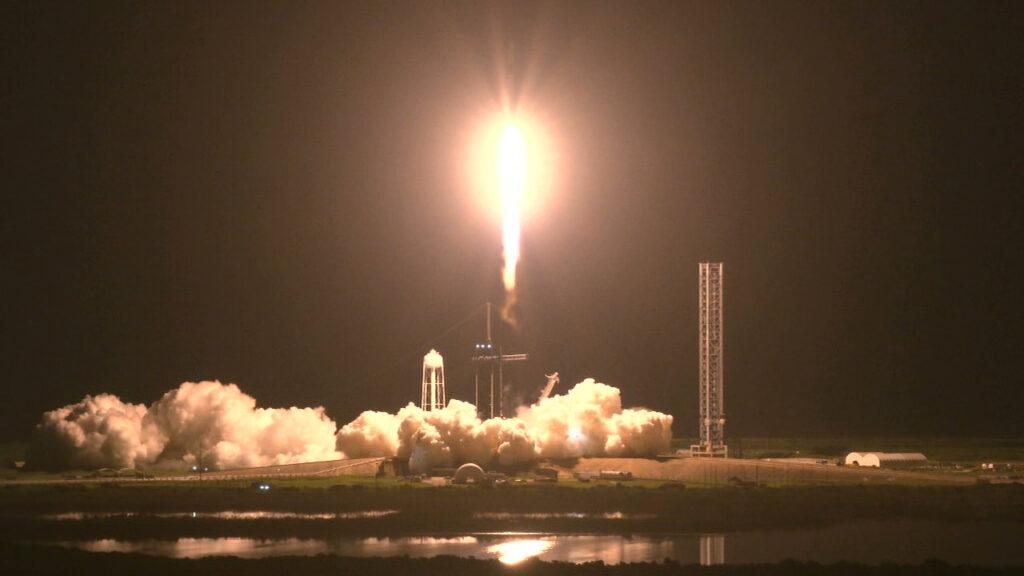
HOUSTON—NASA's SpaceX-chartered Crew-7 Dragon Endurance spacecraft, with astronauts and a cosmonaut representing four different countries, autonomously docked at the International Space Station (ISS) on Aug. 27, prepared to initiate a new six-month expedition at the orbital lab, which has been staffed continuously since November 2000.
Launched early Aug. 25 from NASA's Kennedy Space Center at Cape Canaveral, the Dragon Endurance docked to the space-facing port of the ISS U.S. segment's Harmony module at 9:16 a.m. EDT, to deliver NASA astronaut Jasmin Moghbeli, the spacecraft's commander; the European Space Agency's Andreas Mogensen, the pilot; and mission specialists Satoshi Furukawa of the Japan Aerospace Exploration Agency and cosmonaut Konstantin Borisov of Roscosmos.
The newcomers were greeted by cosmonaut Sergey Prokopyev, the ISS Expedition 69 commander, and six flight engineers: NASA's Steve Bowen, Woody Hoburg and Frank Rubio; the United Arab Emirates' Sultan Alneyadi; and Russian cosmonauts Dmitri Petelin and Andrey Fedyaev. "Thanks for the welcome," Moghbeli radioed.
Endurance's arrival advances a crew exchange that is scheduled to unfold into late September and include the launch and docking of Russia's Soyuz MS-24 with cosmonauts Oleg Kononenko and Nikolai Chub and NASA astronaut Loral O'Hara. Working with the Crew-7 foursome, their agenda includes 177 scientific research and technology development activities, including a new approach to assessing the physiological and psychological effects of long-term spaceflight called the Complement of Integrated Protocols for Human Exploration Research on Varying Mission Durations (CIPHER).
Bowen, Hoburg, Alneyadi and Fedyaey, who launched March 2 aboard the SpaceX Crew-6 Dragon Endeavour, are scheduled to depart the ISS in their reusable space capsule on Sept. 1 for a parachute-assisted splashdown in the coastal waters off the Florida peninsula on Sept. 2 no earlier than 9:38 a.m. EDT, weather permitting.
Russia's Soyuz MS-24 with Kononenko, Chub and O'Hara is to launch from Baikonur Cosmodrome and dock with the ISS on Sept. 15 to begin their six-month tour of duty. They have trained to replace Prokopyev, Petelin and Rubio, who launched to the orbital lab aboard the Soyuz MS-22 on Sept. 21, 2022, for what was to be a six-month mission.
The MS-22 experienced a sudden external coolant leak while docked to the ISS in mid-December from damage attributed to a micrometeoroid or orbital debris impact. The damaged capsule was subsequently replaced with Russia's launch of the uncrewed Soyuz MS-23, which is to return Prokopyev, Petelin and Rubio to Earth in remote Kazakhstan on Sept. 27.
Rubio's 371 days in space will set a new record for the longest spaceflight by an American, breaking the 355-day mark set by NASA astronaut Mark Vande Hei, upon his return to Earth from the ISS on March 30, 2022.
Only three NASA astronauts have so far spent more than 300 days in space over a single mission—a mounting human research focus given that a roundtrip to Mars, which is a long-term goal of the agency's Artemis program, would take two to three years given current propulsion technologies. Four male and four female NASA astronauts have flown missions longer than 200 days while calling the ISS home.
Currently, there are no plans to assign astronauts to ISS missions longer than the standard six-month duration, Joel Montalbano, NASA's ISS program manager, told a post Crew-7 launch news briefing.
However, NASA's Human Research Program is working with its ISS partner space agencies through CIPHER, which began earlier this year, to gather data across 14 physical and psychological health fronts from astronauts flying from a few weeks to six months and longer if they—like Rubio, Prokopyev and Petelin—were to encounter an unexpected mission extension.
The effort is focused on filling knowledge gaps in five areas of concern: radiation exposure, altered gravity, physical isolation, a closed, potentially hostile environment and a separation from the health expertise available on Earth.
Up to 30 astronauts are to participate in CIPHER as subjects of studies focused on changes to muscle, bone, brain, heart and eye tissues and organs. The goal is to gather the deeper-dive data for comparison from 10 astronauts in each of three mission duration categories: short term, the standard six-month ISS assignment and longer-term mission missions as they might occur.
The CIPHER data gathering from the astronaut subjects begins nine months prior to launch and continues through the mission and for two years after the subjects return to Earth. The lineup of 17 CIPHER principal and co-investigators includes medical experts from France, Germany and Japan as well as NASA and U.S. research institutions.





